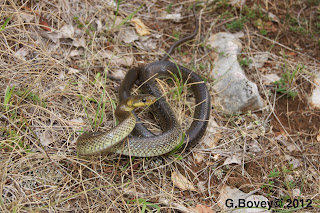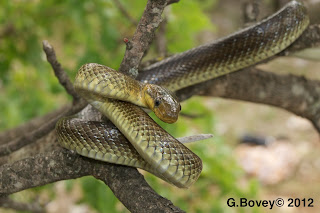Bruno 1968
What an awesome day! Before going search this specimen I ask a lot around, I had many bad news, no informations, just near places like 50km around... Anyway was the good opportunity to move from my place and go see what happens! I totally understand people who don't want give any informations about this specie, too many go there and take them out of the biotopes to bring them back home, and
this is intolerable! If they continue in 20 years the only way to see it will be in terrariums!
Anyway! I was searching for it with a friend, and I was really fortunate to discover it after only 10 minutes of walk in late morning very close to my feet, I can really say, this is my actual most beautiful discovery. As it was the 1st time I see this specimen, my sensation when I took it was ''trembling legs'', but so happy! We reached the goal of the day! We had a look for another one but... seriously it didn't matter have more, cause this one is a really beautiful one from a totally isolated place, you can find Redi Viper around, Berus (in a very surprising biotope) etc... There is still a debate about this specimen to determine if it is a sub-specie or not. Well the mood of this viper is quiet, surprisingly quiet, but had strange behaviors to compare with aspis species:
It is faster, strong breath, and throat getting bigger when breathing, but bites only when really annoyed. This is a young female of approx. 50cm, but can reach 80-90cm. This specimen is considered as one of the most venomous of europe. It has a horn up of the nose, we touched it and is totally soft, the utility of this is still unknown, and its tail is colored in reddish at the extremity for attract preys. This is the most evolved snake we have here due to this particularities. There are other Ammodytes specimens and species, sub-species in mainly eastern europe, that I will probably visit next spring. Well thanks to my friend S.Clerc who helped me taking the pictures.
 |
| Absolutely beautiful patterns |
 |
| Portrait shot with 100mm macro |
 |
| Reddish tail as mentionned |










































































